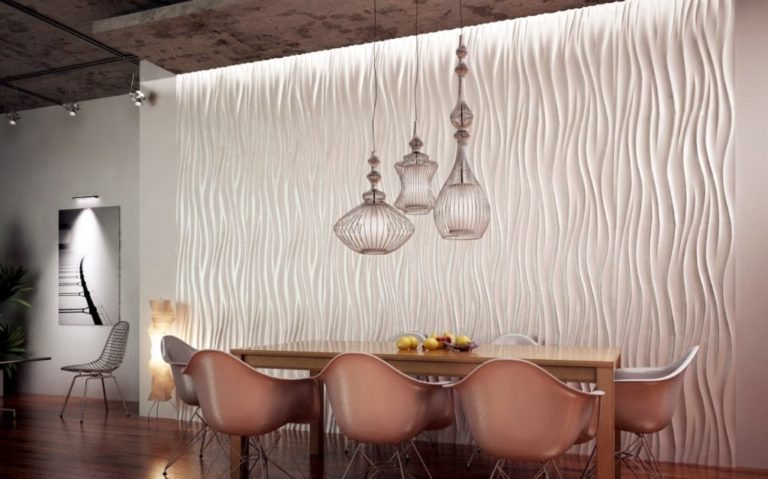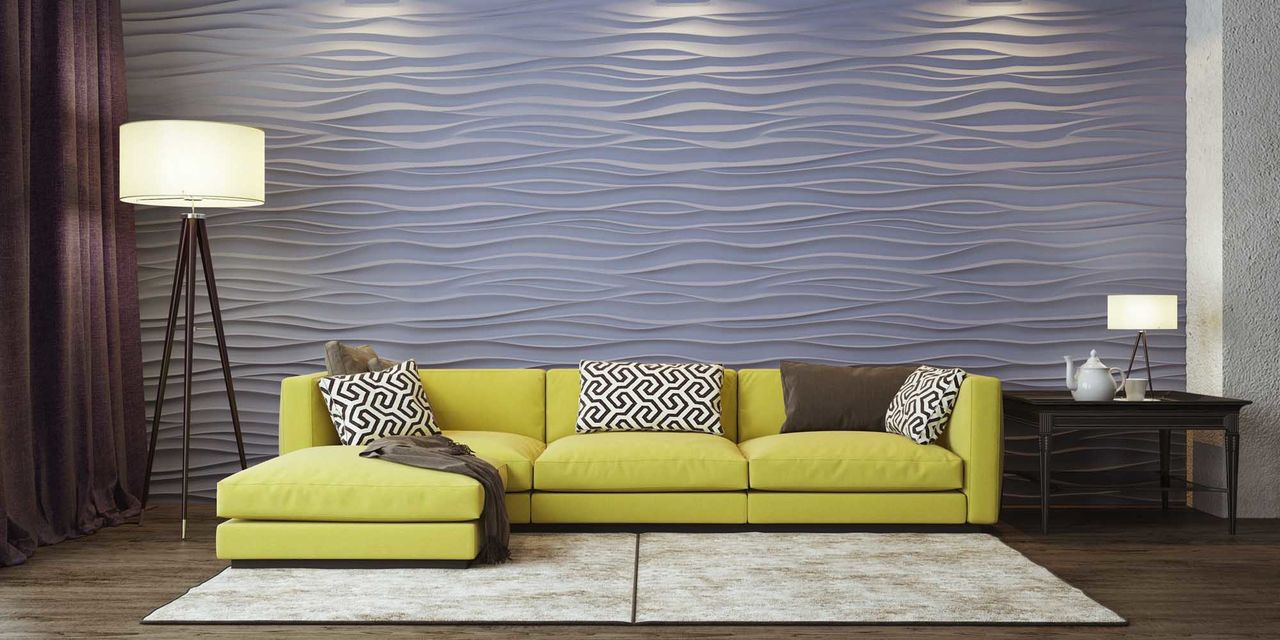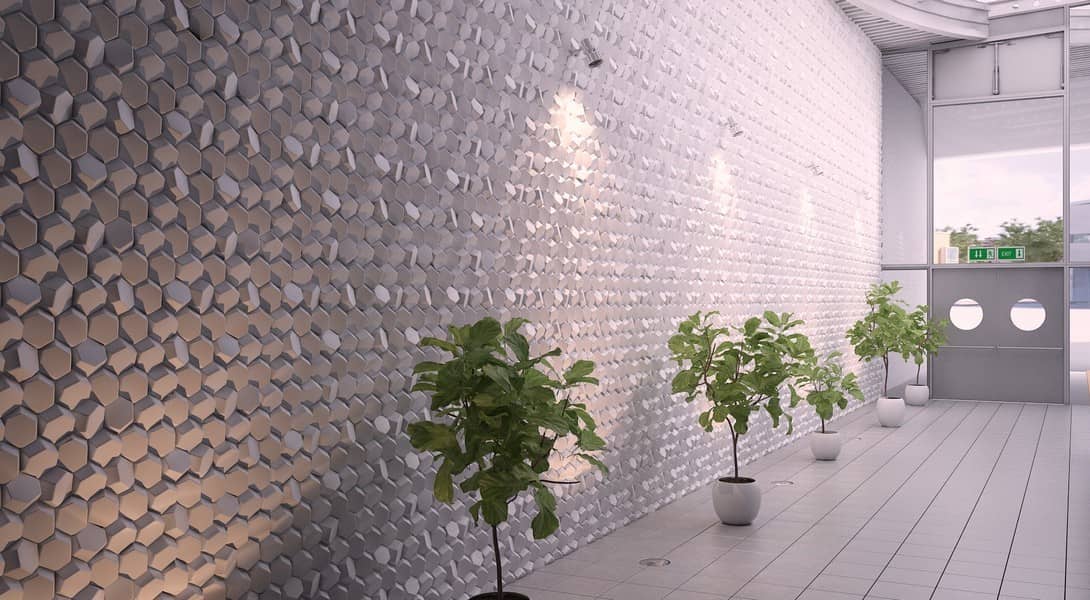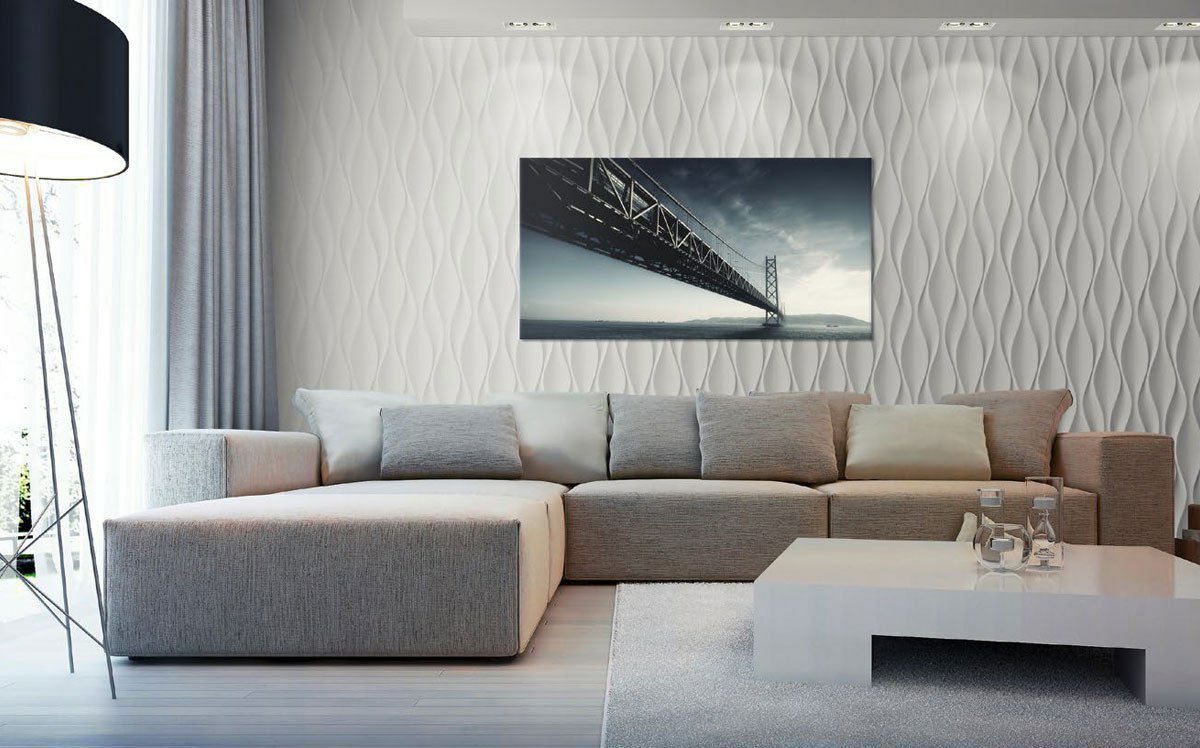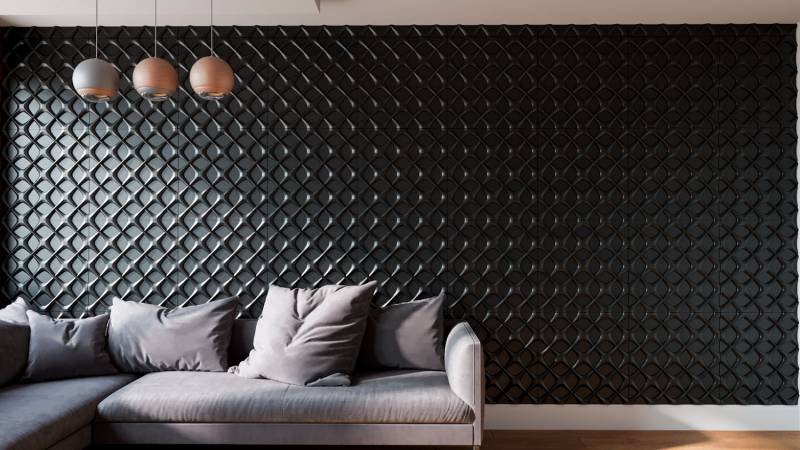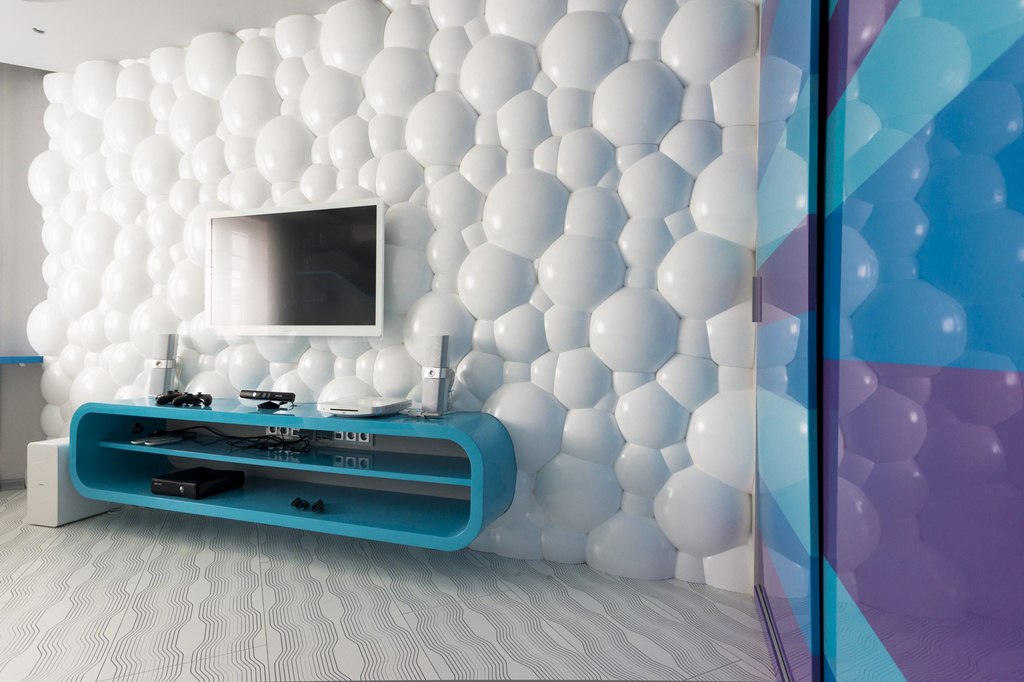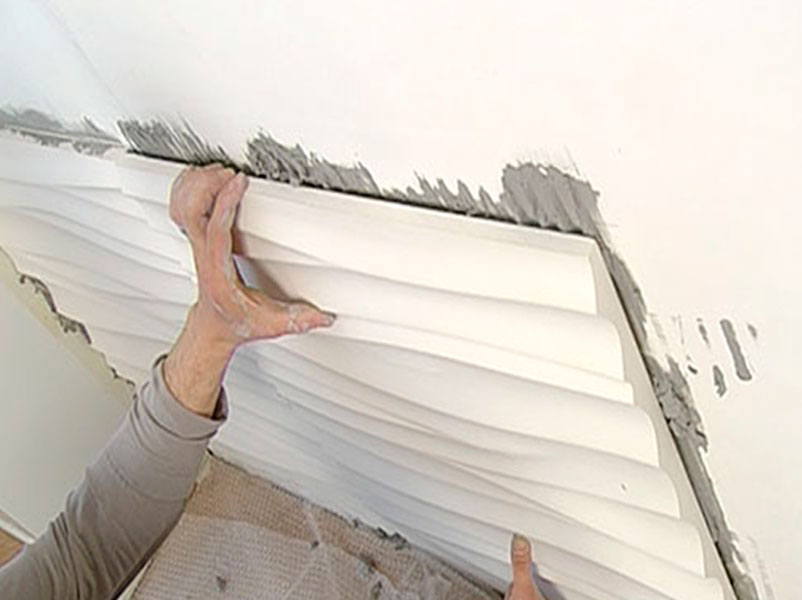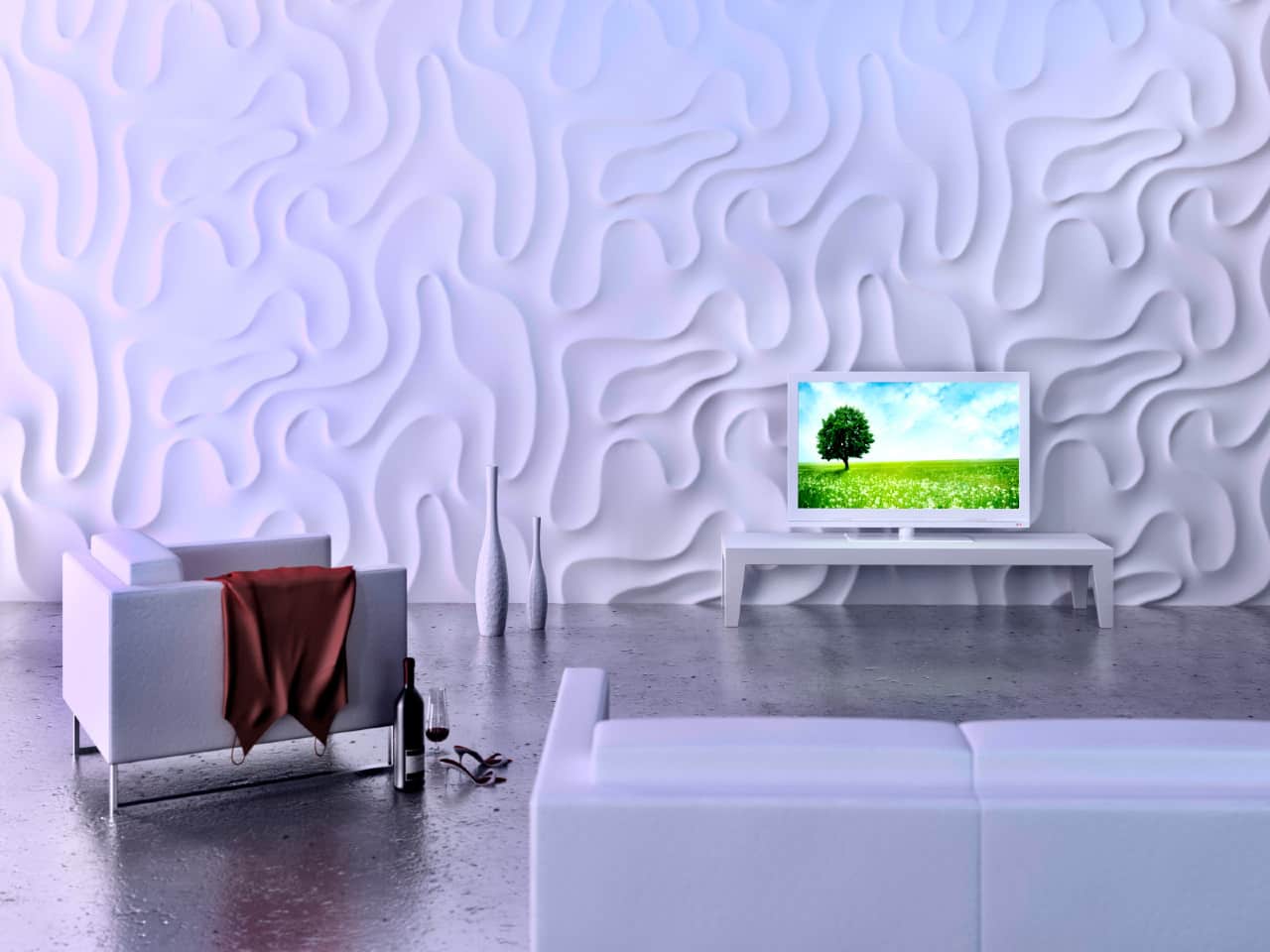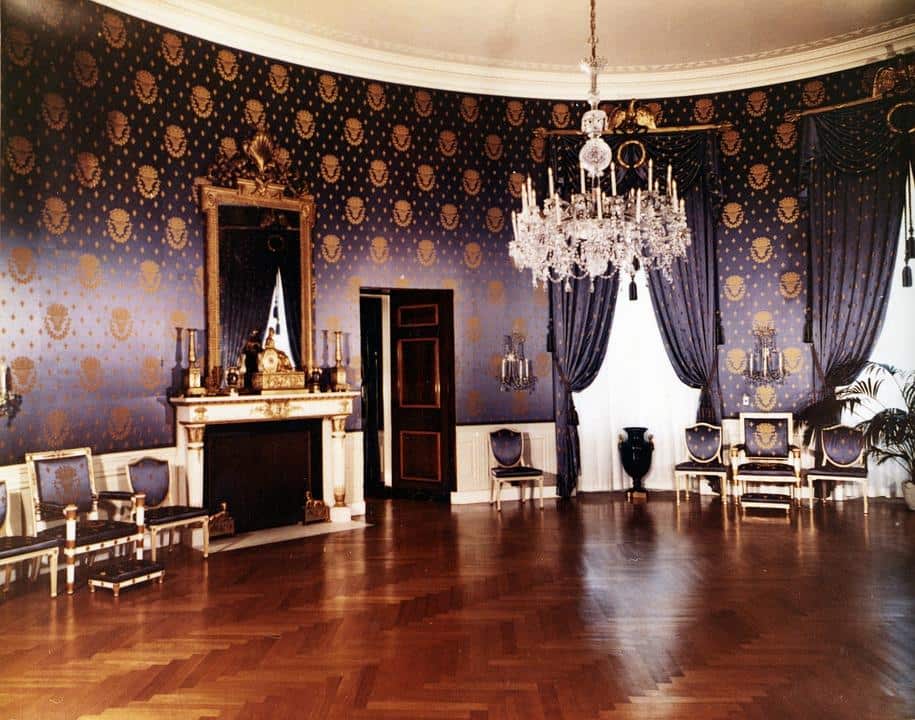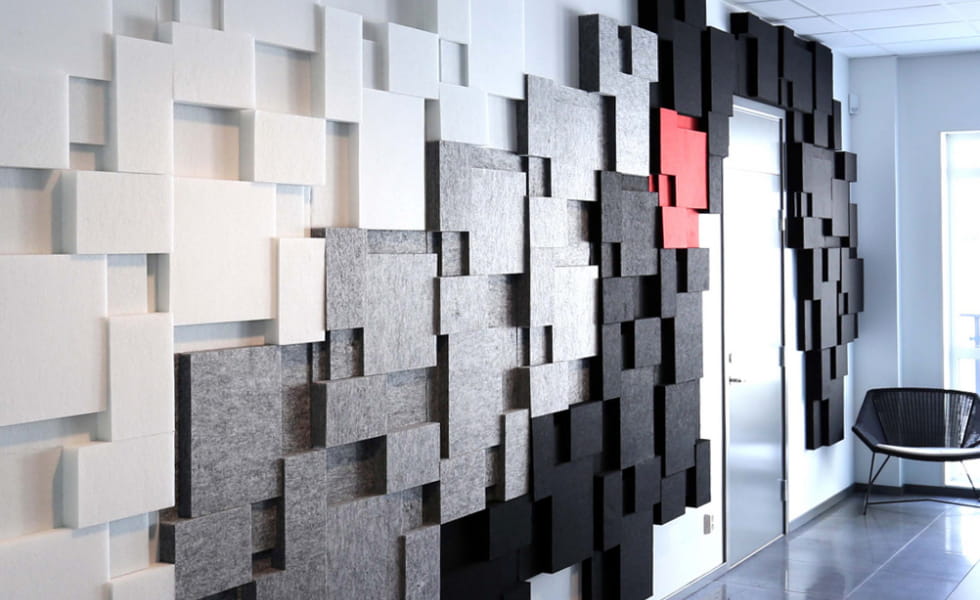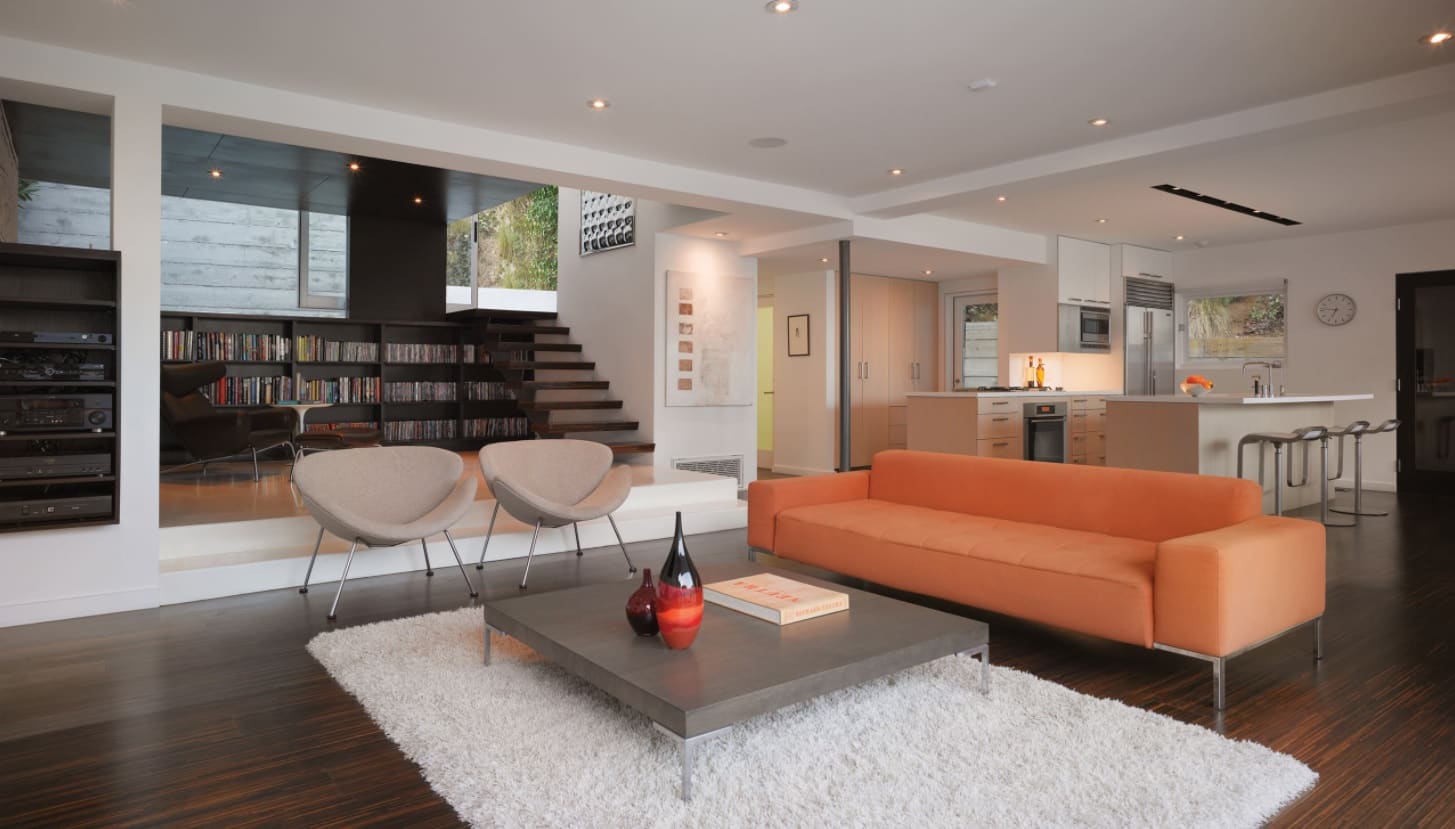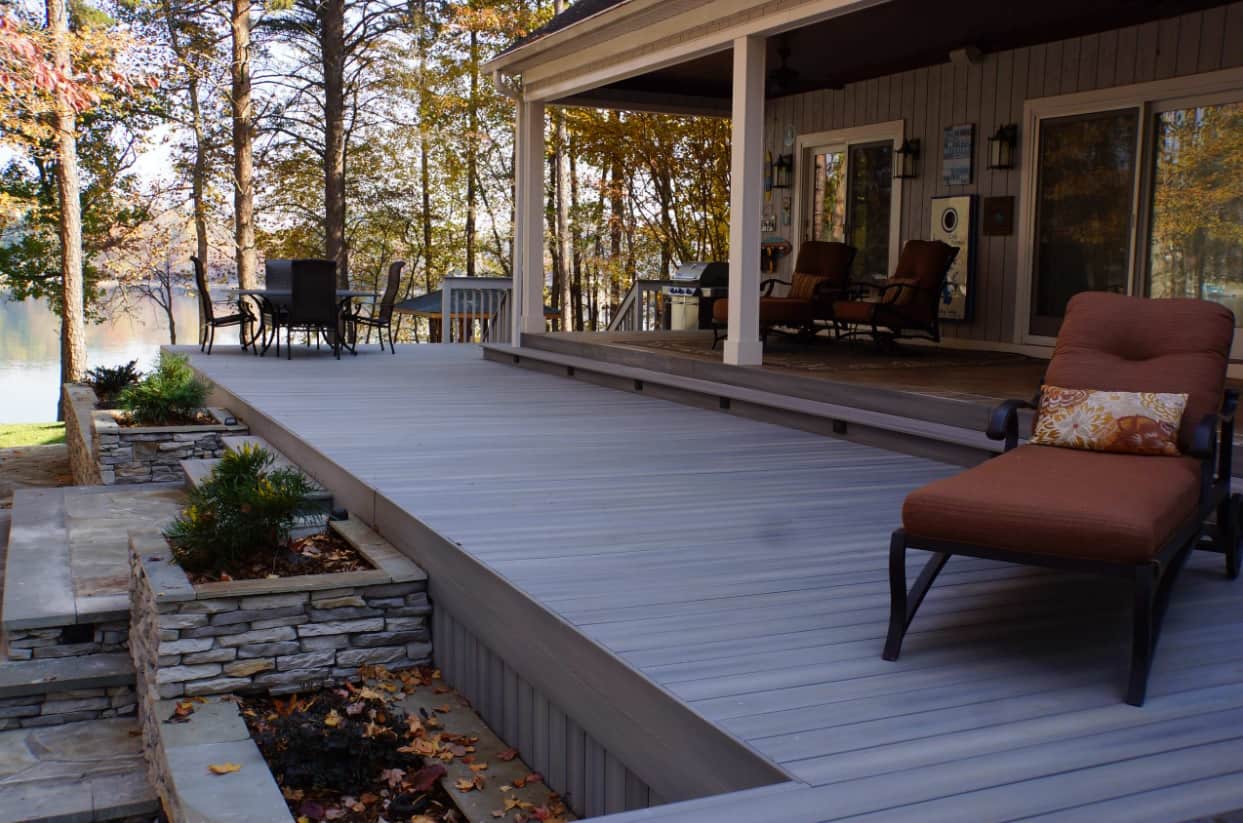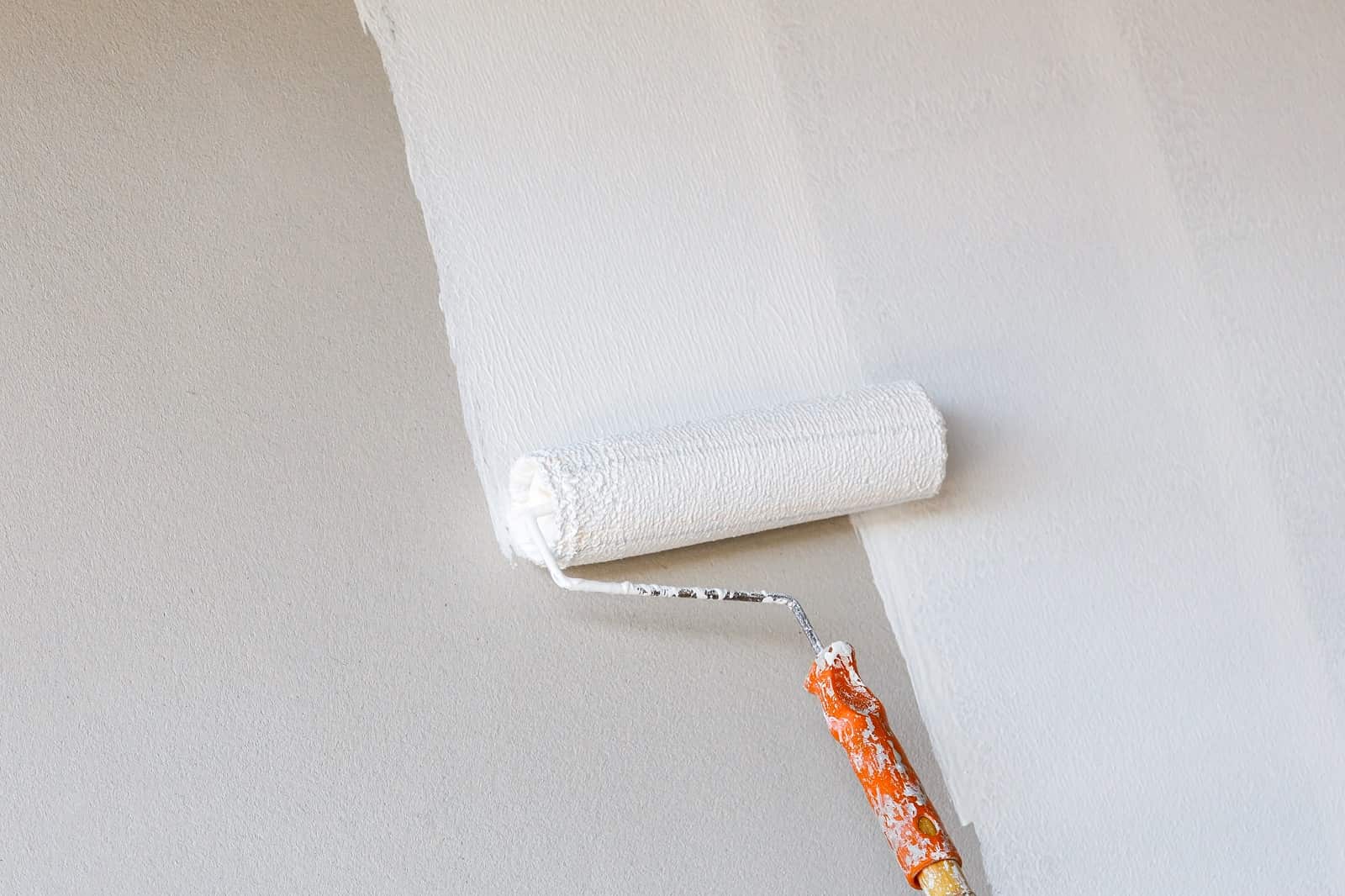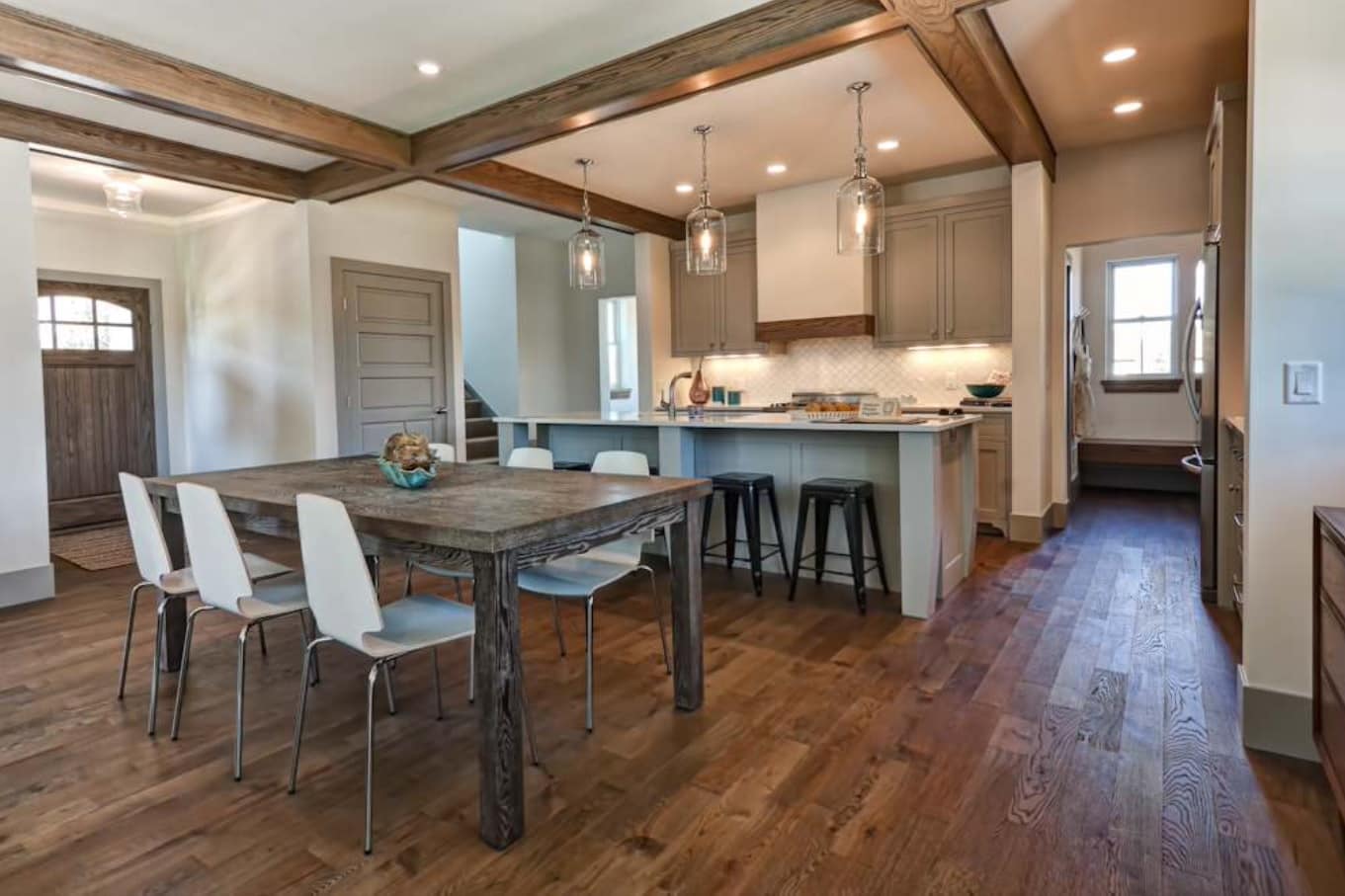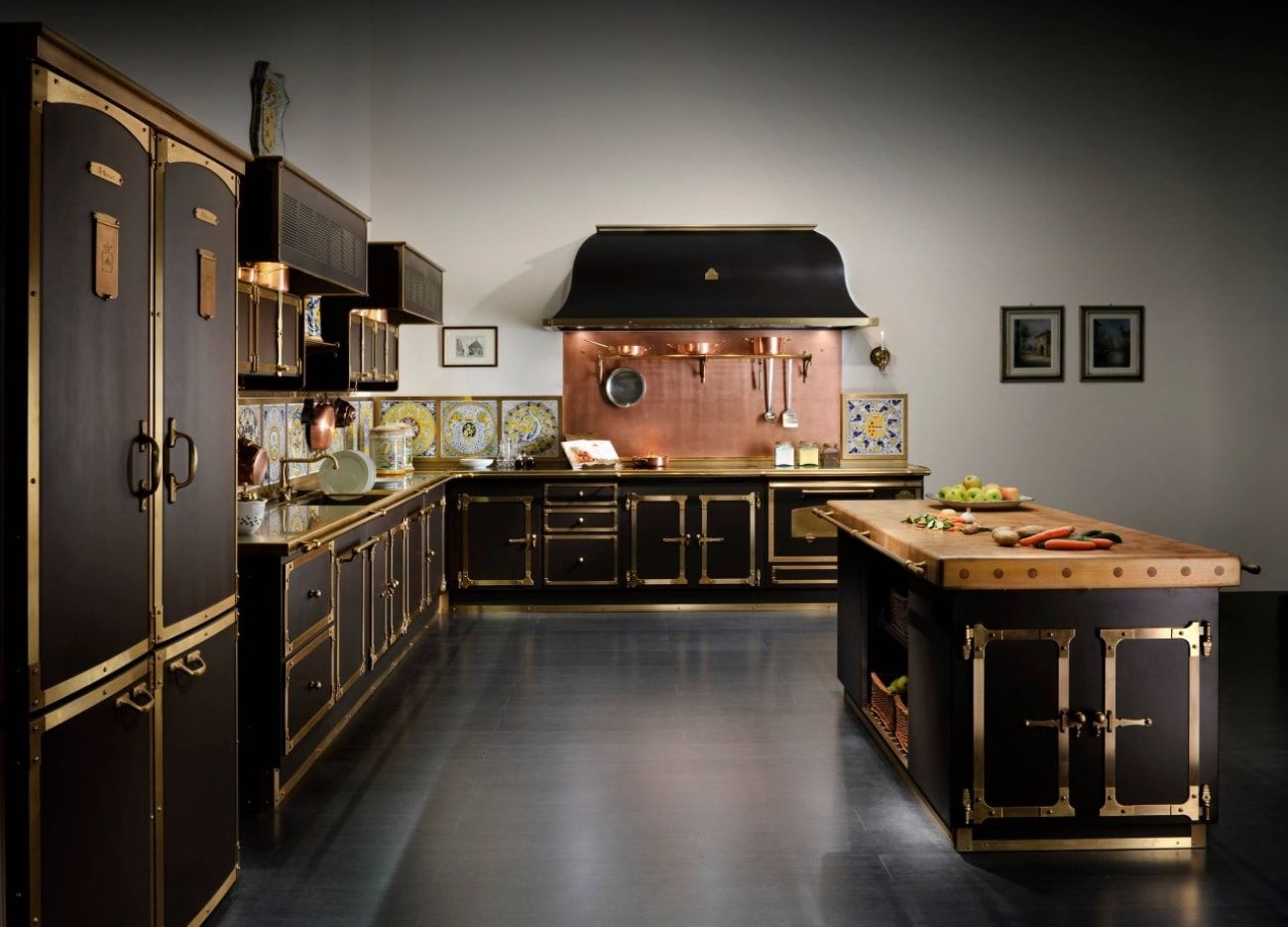Varieties of panels, their features, and disadvantages, easy installation, proper care, the service life – all these details are taken into account further in the article.
Content
- 3D textured gypsum panels for walls
- Relevance
- What is the feature of 3D gypsum panels in the interior: advantages and disadvantages
- How to finish textured wall with 3D gypsum panels DIY
- Care of 3D gypsum panels for walls
- How long do they last?
3D Textured Gypsum Wall Panels
These panels for walls are gypsum plates with a textured image to create an unusual interior in the room. Designers widely use these plates to realize their fantasies and ideas. The installation of the material is simple. If desired, you can create a cladding with your own hands.
Relevance
There are many materials to construct volume surfaces. All of them differ in their properties, have their drawbacks. The most widespread materials for the panels:
- Plaster (gypsum) and additives.
- Polymers with additional constituents.
- Paint for coloring.
Plaster decoration finishes one of the walls in the room. Basically, it is a blank wall in the living room, a partition with a TV, the head of the bed. If all the walls are glued with the material, then the room will become smaller and will “press” with its convex pattern.
What is the Main Features of 3D Gypsum Panels in the Interior: Pros and Cons
Main characteristics of the finishing material:
- safety for health – gypsum material does not contain toxic components;
- tolerates sudden changes in temperature;
- improves sound and thermal insulation;
- has a long service life;
- moderately absorbs moisture. But experts do not recommend using them in a bathroom;
- ease of installation work that does not require much knowledge and physical effort, as well as time;
- simplicity in dust cleaning;
- ease of restoration in case of damage.
Various textures, a relief image, ease of installation, and the ability to cover the material in different colors allow you to create a unique design in the room. However, there are disadvantages to consider:
- mechanical impact – the material is fragile;
- good surface preparation is necessary.
Before you opt for 3D gypsum panels for wall decoration, you need to carefully consider their location and textured drawing.
The choice of drawing is a responsible matter. Some materials reduce space while others increase. The pattern can be bright. At the same time, it can tire eyes.
Facing is combined with other finishing materials:
- With stucco molding.
- With LED backlight.
- Highlighting a specific area in the room – 3D finish and wallpaper or paint.
Based on the information above, you can make a table:
| Gypsum Material | Main Indicator | Differences |
| Moisture Res. | Moderate moisture resistance. However, use in the bathroom is not recommended | Ease of restoration. To do this, use gypsum putty |
| Soundproofing | Enhances sound insulation, thermal insulation | |
| Temperature | If there are sudden changes in temperature, this does not affect the material | All wiring is laid under the finishing material |
| Lifetime | If you conduct proper care of the finishing material and do not damage it mechanically it has a long service life | After finishing work, there are no joints that need to be covered with reinforcing tape |
| Maintenance | Gypsum panels are well cleaned from dust | |
| Weight | The plaster finish is relatively light. One plate 50 * 50 cm in size weights less than 5kg |
How to Finish the Wall with Textured 3D Panels with Your Own Hands
Gypsum tiles can be DIY installed. There are no difficulties with this. The main process is surface preparation:
- remove all crumbling plaster and putty areas;
- then it is necessary to cover up all the holes that have appeared. Cracks expand and reinforce;
- when the putty dries, the surface should be primed.
Now you need to choose one of the ways of fixing the tiles: glue or crate.
Which Panels to Choose?
On the construction market there is 3D cladding with such patterns:
- Lines – smooth lines with soft transitions. The stripes are different in width. The direction is usually horizontal, vertical or diagonal. Sometimes it resembles a footprint in the sand from a departed wave. The protrusion of the line above the plane is also different. Such finishing material is used for recreation (let’s say in the bedroom).
- Honeycombs have cells of various depths and sizes. The panel can be made with slightly applied honeycombs or with an apparently voluminous pattern. Such decoration is perfect for the walls in the hallway, corridor.
- Stone/brickwork. Bricks have both a smooth and a rough surface, which strongly resembles the real bricklaying. Arrangement of bricks goes in a checkerboard pattern or horizontally with seams. Sometimes panels are created in the form of cracked plaster. This material is used for wall cladding in the living room, hallway.
- It can also be in the form of wood. Such cladding is suitable in the home office or library.
- The abstraction is made in the style of the loft, high-tech, minimalism. Use different patterns for this (rectangles, aisles). They protrude above the surface and cross each other. This finish looks decent in any room.
- Bubbles are a replication of the forms of soap bubbles on the wall. They protrude above the surface at different heights. Bubbles are also small and large. When properly processed, they will look good on the sidewall of the balcony.
- Flowers and plants – such a panel is used in various rooms but of a small area because it will look bulky.
The choice of cladding is large. Therefore, it must be treated responsibly. This will emphasize the individuality of the interior and decorate the room.
Requirements
After measuring the surface for finishing, the following materials and tools are needed:
- the precise amount of facing material;
- primer on the walls against a fungus with an antiseptic;
- glue;
- level, tape-measure, pencil;
- sandpaper, hacksaw for cutting panels;
- rubber spatula, paint, brush, roller.
If you do the crate, the tool kit is slightly different: a screwdriver, dowel-nails, wooden battens or metal profiles, self-tapping screws.
Step-by-step Mounting
- After cleaning and priming the surface, you need to make a marking. The panels are primed from the back and left to dry. After it, the whole figure, like a puzzle, is laid out on the floor.
- Then stir the adhesive. Gypsum adhesives dry quickly, so you need to prepare the solution in small volumes.
- Professionals begin work from the bottom corner of the surface. By installing a guide profile or wooden rail in order to keep the material on it.
- The glue is applied with a spatula to the tile and applied to the surface according to marking.
For the durability of furnish, it is fixed by self-tapping screws.
The next tile is applied side by side (seamlessly) to the first one glued and evened so that the pattern matches.
For cutting gypsum use a hacksaw with small teeth. The cut side is sanded with sandpaper.
Holes for sconces and sockets are cut beforehand.
All plates have an allowance for the consumption of the pattern in millimeters; it is covered with putty and rubbed with sandpaper.
If the wall is lined starting from internal corners, then it is necessary to indent 3-5 mm from the corner so that cracks do not go when the building moves. And it also helps from sudden changes in temperature.
After facing and drying the adhesive mixture, it is necessary to cover all joints with putty. It should dry.
After drying, the seams are rubbed with sandpaper. The surface is coated with a primer, paint.
Observing all the phasing, the lining will pass quickly and easily.
Can it be Varnished or Painted?
To paint the lining, you need to choose paint – water-soluble or waterproof acrylic paint. The coloring should match the picture. That is, if these are bubbles, then they can be blue or rainbow, and the lining imitating wood is brown, cocoa with milk, and coffee tone in combination with a beige tone.
Paint is applied with a roller and brush. Monotony can be achieved with a spray gun. The varnish is applied to the top of the dried paint. It can be matte, glossy. The varnish will complement the picture and protect the panel from the subsidence of dust, active moisture.
The installation of 3D cladding resembles the assembly of a puzzle on the wall. This must be done carefully, slowly.
Maintenance of 3D textured Gypsum Wall Panels
For a long service life, you must adhere to some tips:
- The panel is restored using gypsum plaster after mechanical damage. After drying grout, primer, paint and varnish are applied. If the damage is too noticeable, the panel is replaced with a new one.
- Gypsum lining is not washed but wiped with a soft cloth, microfiber without chemicals for cleaning.
- The color of the panels can be changed up to 25 times. After that, the surface is changed.
Correct and timely looking after the panels will allow them to decorate the room for more than one year.
How long do They Last?
Panel’s life is approximately 50 years and more. However:
if there are frequent temperature changes that lead to increased humidity;
- constant exposure to direct sunlight;
- frequent impacts;
- constant vibrations and movement of the house.
In this case, the service life is sharply reduced to 10-15 years or less.
3D textured gypsum wall panels decorate the room; make the interior of the room unusual. They are easy to mount with your own hands, painted in a color and pattern suitable for the interior. If the panels are regularly maintained, then they will be the decoration of the room for 50 years (or until you get bored and decide to change the atmosphere).

